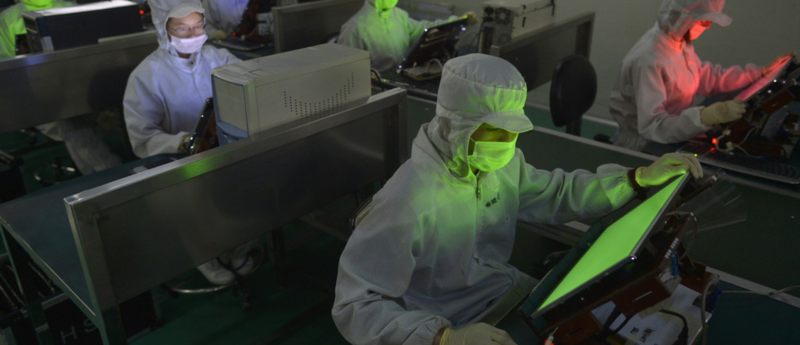Factories no longer the sure route to prosperity.
Countries once grew rich through manufacturing – but today there is more than one way to effect structural transformation.
Think about countries growing out of poverty and you probably picture something like this: underemployed workers leaving inefficient farms for factories that make textiles and clothing for domestic and export markets. Over time, this shift raises productivity and wages across the economy, while countries’ production and export baskets diversify into more sophisticated goods and services.
For the past several decades, this image would have been broadly on the mark. South Korea is a prime example: through the 1950s, a large share of its population still worked in the agricultural sector. Its manufactured exports a decade later were mostly textiles, clothing, footwear and wigs.
Two generations on, in 2017, Korea was the world’s fifth-largest merchandise exporter and its ninth-largest importer. Even if your mobile phone and household electronics weren’t made by a Korean company, they almost certainly contain integrated circuits that were.
In varied ways, and to differing extents, countries from Bangladesh to Colombia to China have trodden this path. Since the dawn of the Industrial Revolution in late 18th century England, ‘structural transformation’– a term economists use for the process of shifting people and resources out of subsistence work into more productive activities – has begun with labour-intensive manufacturing.
And starting in the 1950s, trade has been a key accelerator of structural transformation in developing countries, enabling much faster growth and poverty reduction than would otherwise be possible.
Good enough to compete
Trade matters in this story because in most developing countries, internationally tradable sectors are typically much more productive than the rest of the economy.
Pulling more people and capital out of non-tradable activities and into firms dealing in tradable goods and services therefore makes for better jobs and a more productive economy overall; after all, the global marketplace offers far greater levels of demand than small home markets, and is a source for ideas, inputs, and knowhow.
Meanwhile, the discipline of international market competition serves as an ongoing test for businesses’ operational efficiency: to succeed, they need to be good enough to compete.
Beginning in the 1990s, a twist emerged in manufacturing and trade: improved communications technology combined with predictably open markets to spur a dramatic increase in multi-country supply chains.
Companies could more easily coordinate operations across far-flung production facilities and be reasonably confident about the access terms their goods would receive in destination markets.
This made it possible to disaggregate activities that used to occur within a single factory across regions and even oceans, locating each step of production wherever it could be done at the best quality and for the best price.
This ‘value chain revolution’ did not just lower costs for businesses and prices for consumers; it lowered the bar for developing countries to break into world markets. Countries and companies no longer needed to produce finished goods: they could tap into the benefits of international trade by producing or processing components within larger value chains.
Two serious challenges
Trade-led structural transformation can reshape countries’ economic possibilities and prospects for eliminating extreme poverty and creating large numbers of jobs, as envisaged by the Sustainable Development Goals, but today it faces two serious challenges.
First, the open global economy itself is under threat. New trade restrictions have been placed on hundreds of billions of dollars of traded merchandise, and the very notion of rules-based cooperation on trade has come under sustained political attack.
Second, increasingly sophisticated labour-saving automation means that manufacturing does not require as many workers as it used to. This diminishes the importance of labour costs as a factor in where to locate production.
Even in labour-intensive industries like garment manufacturing, changing business models are ‘nearshoring’ some investment back towards advanced economies.
As for services, the digital revolution has made cross-border trade feasible for everything from programming to accounting and legal services.
But value addition and trade in services aren’t just about technology parks in Bangalore or call centres in Dakar.
Allowing global markets to slam shut will diminish growth opportunities around the world, especially for the people and places that need it most. Yet irrespective of what happens to trade, robust manufacturing sectors will now be just one component of economic growth and development. To generate better jobs in the numbers needed, developing countries will need to broaden their growth strategies.



